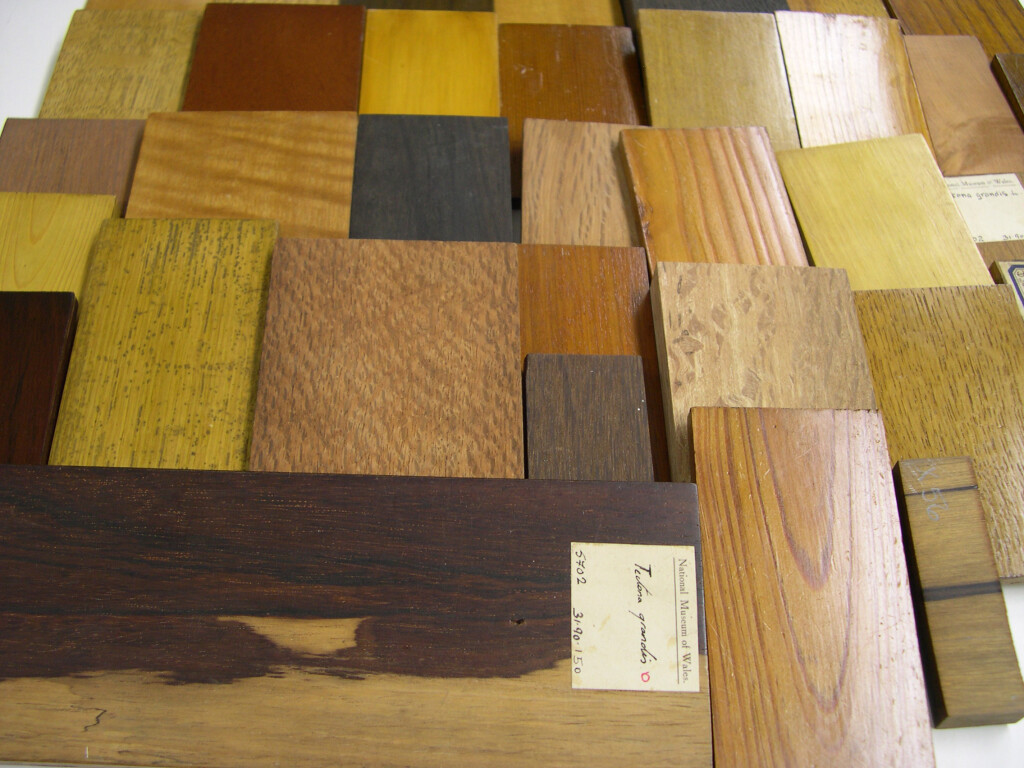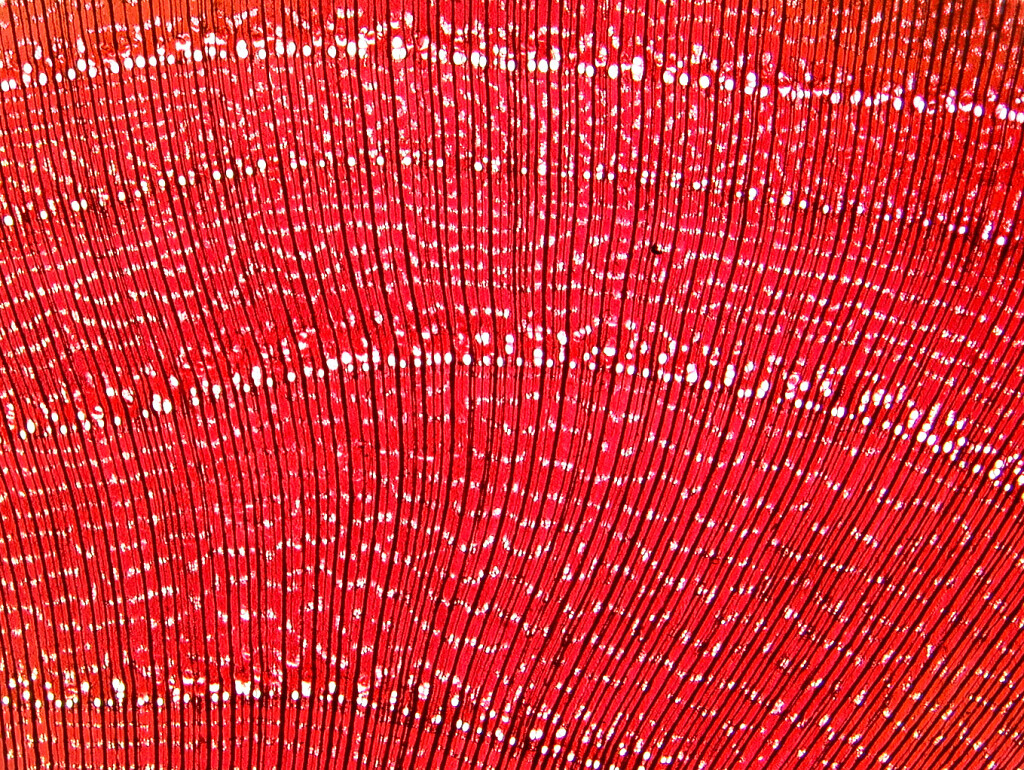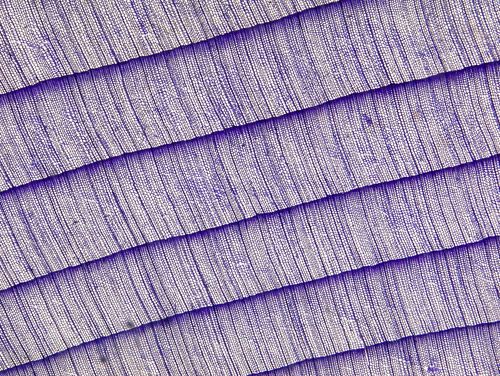Timber

Image 1: Typical example of mixed woods within the collection

Image 2: Timber exhibit at the Royal Welsh Show in 1968

Image 3: Section of Ash (Fraxinus excelsior) blown down in the Hayes, Cardiff.

Image 4: Stained slide of Wych Elm (Ulmus glabra)

Image 5: Section of Elm showing wavy grain

Image 6: Stained slide of Japanese Fir
The Museum is home to a timber collection comprising c.12,000 pieces of wood from stained microscopic slides, charcoal samples, planks and giant sections, metres high. The collection is hugely impressive with examples of specimens from all over the world and is currently one of the fifth most significant collections in the UK, definitely worth a visit. The majority of the collection was acquired during the 1920s and 30s. Many of the larger sections were donated by local landowners such as the Earl of Plymouth whilst smaller handling specimens of tropical hardwoods were donated by, or purchased from, timber importers. In 1985 the collection was increased significantly by the purchase of the Wheldon and Wesley collection of approximately 2,000 handling specimens.
Some of the more unusual aspects of the collection include various stages in the manufacture of sports equipment such as cricket bats and tennis racquets from producers based in Cardiff and Nottingham.
The collection has had a colourful past and has moved to different stores within the museum. The collection used to be exhibited and here it travelled to the Royal Welsh Show in Builth. The collection is a useful reference tool and here people can be seen comparing the many different coloured hues and grains.
Amgueddfa Cymru — National Museum Wales has also displayed the collections through the years in various exhibits and the image of an Ash section shows that historic events are also marked in trees. The tree section was sent to the museum to commemorate when it was blown down on the Hayes in January 1974. The trunk section was then used for a tree dating exhibition.
These colourful images were taken from our microscopic slide collection and show clearly the cellular structure of tree wood. Image 4 is a stained transverse section (across the trunk) showing the medullary rays and growth rings. This is a sample of Wych Elm Ulmus glabra which is a deciduous wood (Angiosperm). If you look closely you can see the large pores (vessels) at the beginning of the growth lines but in the later wood (as the tree continues to grow) the cells are much smaller and arrange themselves in a wavy line. The larger pore size relates to the need to send large amounts of water to the newly forming leaves in spring. The pore size reduces as the need of the tree lessens, this is apparent in the later wood, as the season drawers into winter. The arrangement of pore in thus slide is a distinctive characteristic of Elm and can be seen in image 5 where there are rich wavy lines throughout the grain.
Image 6 is an example of Japanese Fir (Abies firma). Compare this to the slide 4 of Elm. This is a softwood (Gymnosperm) and these are considered more primitive than the Angiosperms. Softwoods have exposed seeds and do not lose their leaves in winter. This means that firs have a continual growing season un-like deciduous trees, where they burst into leaf in spring. The cell structure of gymnosperms is much more regular and regimented, with no large pores or wavy pore patterns, unlike the Elm.
A catalogue of the collection has been compiled, but is currently being updated. The original is available on request. The entire collection is housed at Amgueddfa Cymru - National Museum Wales' Collection Centre at Nantgarw and can be viewed by appointment.

